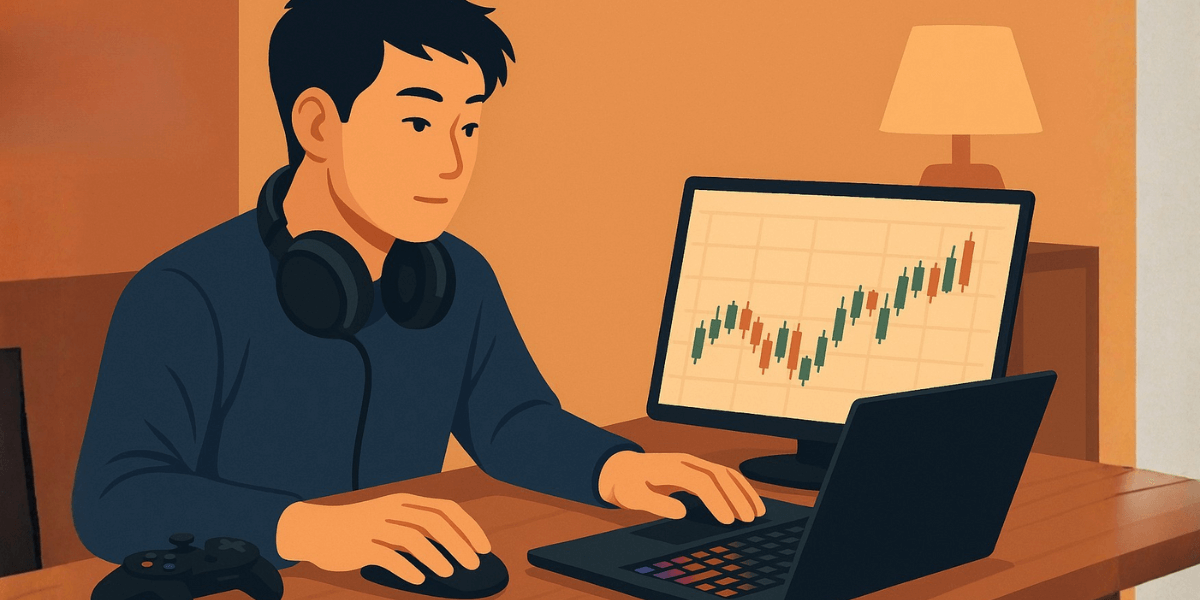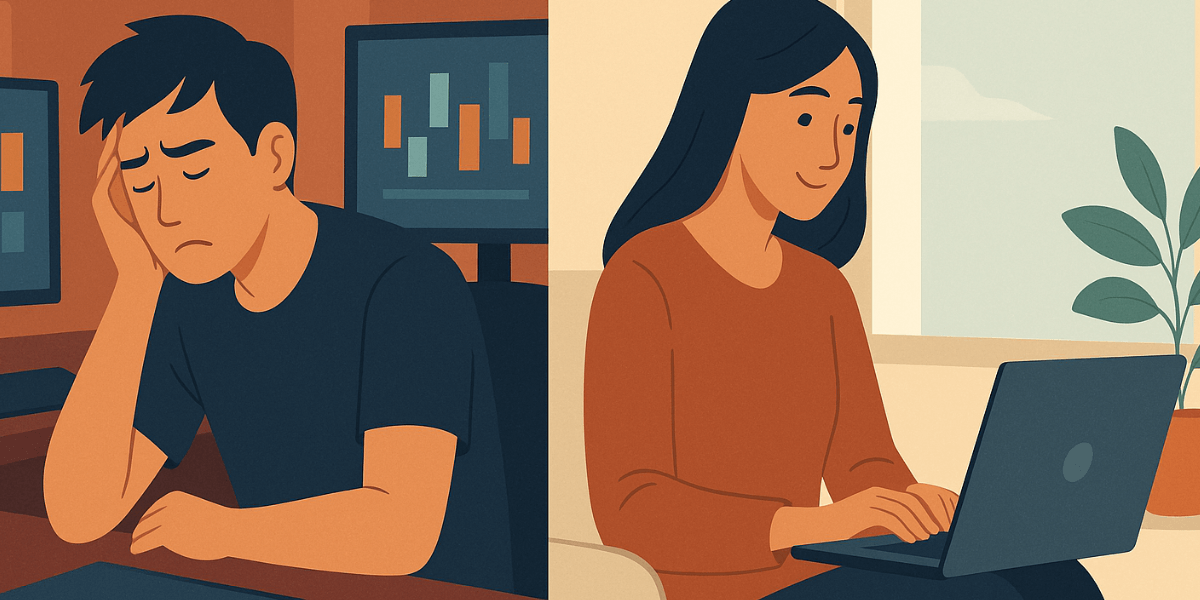Margin in forex trading refers to the possibility of borrowing money to allow traders to control larger positions than their actual account balance.
Margin acts as a deposit with the broker, securing a portion of the trader’s funds to cover potential losses. The ratio between the deposit and a maximally allowed position size is also known as leverage. Although lucrative, this ability can be tempting, as Warren Buffett famously said that the three L’s that ruin men are liquor, ladies, and leverage.
A lack of understanding of how margin works can lead to significant losses, so it is essential for traders to grasp the concept thoroughly before engaging in leveraged trades.
How Margin Works in Forex Trading
Margin refers to the amount of money a trader must deposit to open and maintain a position with the broker. If a trader doesn’t borrow money from the broker, then the trader is not trading on margin. This approach is typical for long-term investments like buying stocks, where regulation often prevents the use of margin. However, margin trading in forex is a norm, and the ability to control a large position in the market is referred to as leverage.
Leverage is expressed as a ratio, such as 50:1, which means that for every SGD 1 of capital, the trader can control SGD 50 worth of a currency pair. This allows traders to amplify their potential profits, as they can gain exposure to larger market movements than their initial investment would allow. However, leverage also increases the potential for losses, making it a double-edged sword.
Margin and Leverage Example
Consider a trader who wants to open a USD/SGD currency pair position. If the trader’s broker offers a leverage ratio of 50:1, the trader could control a $100,000 position with just $2,000 in margin. If the USD/SGD exchange rate moves in the trader’s favor by 1%, the trader will earn a profit of $1,000, a 50% return on their $2,000 margin. Conversely, if the exchange rate moves against the trader by 1%, they would lose $1,000, half their margin deposit.
Different Types of Margin
Depending on the broker and their regulations, there can be two different types of margins for initiating and maintaining a trade.
- Initial Margin: The initial margin, or deposit margin, is the amount of money a trader must deposit with their broker to open a position. This deposit is collateral to cover potential losses and allows the trader to access leverage. The initial margin requirement varies depending on the broker, the currency pair being traded, and the level of leverage being used. For example, if a trader wants to open a position worth $100,000 in the EUR/USD currency pair, and the broker requires a 1% initial margin, the trader would need to deposit $1,000 as collateral.
- Maintenance Margin: Also known as a variation margin, is the minimum amount of equity a trader must maintain in their margin account to keep a position open. If the trader's account equity falls below this level due to adverse market movements, the broker may issue a margin call, requiring the trader to deposit additional funds or close out some or all of their positions to meet the margin requirement.
Understanding Free Margin, Used Margin, and Margin Level
Free margin refers to the amount of money in a trader's account for opening new positions. It is calculated by subtracting the used margin from the account equity. Used margin, on the other hand, refers to the amount of money currently being used as collateral for open positions.
Margin level is an important metric that indicates the health of a trader's margin account. It is calculated by dividing the account equity by the used margin and multiplying the result by 100. A higher margin level indicates a healthier account, while a lower margin level signals that the account is at risk of a margin call.
For example, if a trader has $10,000 in equity and $2,000 in used margin, their margin level would be 500%. If the margin level falls below a certain threshold (usually set by the broker), the trader may receive a margin call or have their positions automatically closed to prevent further losses.
Maintenance Margin Requirements
Every broker has a maintenance margin requirement, which is the minimum amount of equity you need to have in your account to keep your positions open. This is usually a percentage of the total margin required for your trades. If your account equity falls below this maintenance level, you'll likely face a margin call. Brokers might also increase margin requirements during periods of high market volatility, meaning you'll need more equity to maintain your positions. It's a safety net for the broker, but it can put pressure on traders if the market turns unexpectedly.
Here's a quick look at how margin requirements can affect your account:
|
Scenario |
Account Equity |
Margin Requirement |
Action Needed |
|---|---|---|---|
|
Initial Trade |
$5,000 |
$1,000 |
Position opened |
|
Market Moves Against You |
$1,500 |
$1,000 |
Still above maintenance margin (e.g., $500) |
|
Equity Falls Below Maint. |
$400 |
$1,000 |
Margin call issued; positions may be closed |
It's crucial to monitor your account equity closely, especially when trading with leverage. Unexpected news or events can cause rapid price swings, and you don't want to be caught off guard by a margin call.
How Brokers Determine Margin Requirements
Brokers determine margin requirements based on several factors, including the trader's account balance, the currency pairs being traded, and the level of market volatility. Higher leverage ratios typically require lower margin deposits, while lower leverage ratios require higher margin deposits.
For example, a broker might require a 1% margin for a major currency pair like EUR/USD but a 2% margin for a more volatile or less liquid pair like USD/SGD.
Additionally, during periods of high market volatility, brokers may increase margin requirements to protect themselves from potential losses. Such notifications often happen after significant market events, such as Brexit, the announcement of the COVID-19 pandemic, and similar.
What is a Margin Call, and When Does it Occur?
A margin call occurs when a trader's account equity falls below the required maintenance margin level. This situation arises when the market moves against the trader's positions, leading to a significant decline in account equity. When a margin call is triggered, the broker may request that the trader deposit additional funds to bring the account equity back up to the required level.
If the trader fails to meet the margin call, the broker may take action to protect their interests, such as liquidating some or all of the trader's open positions. This liquidation is known as a "stop out," and it helps ensure that the trader does not lose more money than they have in their account.
Margin calls can occur en masse in market crashes, particularly in equities markets. However, due to diversified portfolios, sell-off risk can spread to other assets as brokers start liquidating positions, causing a simultaneous decrease in the value of all assets. For this reason, simultaneous sell-off events are often called forced deleveraging, as they’re caused by trading using too much margin.
What is a Stop-Out Level?
A stop-out level is the point at which a broker will automatically close a trader's positions to prevent further losses. This level is typically set as a margin level percentage and varies depending on the broker's policies. For example, a broker might set the stop-out level at 50%, meaning that if the trader's margin level falls to 50%, the broker will begin closing positions.
Stop-out levels are designed to protect traders and brokers from excessive losses. For traders, the stop-out level helps ensure they do not lose more money than they have deposited in their accounts. For brokers, it helps mitigate the risk of having clients with negative account balances.
Frequently Asked Questions
What exactly is margin in forex trading?
Think of margin as a security deposit you give to your broker to open a trade. It's not a fee, but a portion of your own money that's set aside to show you're serious about the trade. You don't need the full amount of the trade; just this small deposit allows you to control a much larger amount of currency.
How is margin different from a transaction cost?
Margin is like a good-faith deposit. It's the minimum amount of money you need in your account to start a trade. Your broker holds onto this deposit while your trade is active. It's not part of the cost of the trade itself.
How are leverage and margin related?
Leverage is like using borrowed money to increase the size of your trade. Margin is the deposit you need to make to use that leverage. So, if you have a 10:1 leverage, you only need to put up 10% of the trade's value as margin.
What is a margin level and why is it important?
Your margin level indicates the percentage of your account's funds allocated to your open trades versus the amount available. A higher margin level means you have more wiggle room. If it gets too low, your broker might close your trades to protect themselves.
What is a margin call and when does it happen?
A margin call occurs when your account's equity falls below the required margin for your open trades. It's a warning from your broker that you might need to add more funds or that they might start closing your positions.
How does margin affect potential profits and losses?
When you trade with margin, you can make more money if your trade goes well because you're controlling a larger amount. However, you can also lose money much faster if the trade goes against you, as the losses are based on the full trade size, not just your deposit.
Note: Any opinions expressed in this article are not to be considered investment advice and are solely those of the authors. Singapore Forex Club is not responsible for any financial decisions based on this article's contents. Readers may use this data for information and educational purposes only.







